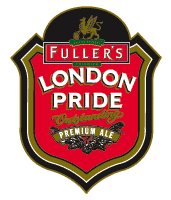 Right, it’s time for another Session, that day of the month when beer bloggers all over the damn place kinda-sorta post about the same thing. This month, it’s being hosted by Gastronomic Fight Club, which is a bit odd since GFC appears to be a food blog (based in Omaha, no less) rather than a beer blog. But hey, beer is food, so it’s all good.
Right, it’s time for another Session, that day of the month when beer bloggers all over the damn place kinda-sorta post about the same thing. This month, it’s being hosted by Gastronomic Fight Club, which is a bit odd since GFC appears to be a food blog (based in Omaha, no less) rather than a beer blog. But hey, beer is food, so it’s all good.
For the past three sessions, we’ve focussed on particular beer styles – stouts, dubbels, and milds. But this month, we’re mixing it up a bit, as snekse (I bet that’s not his real name…) at GFC has decreed that we shall all drink and write about a local brew (or brews). The specific parameters were that it had to be brewed within 150 miles of our house, preferably at the brewery closest to us, and leaning towards beers that are not well distributed outside of our area.
Well, if I was writing this 10 years ago, my pick would probably be something from Upper Canada Brewing, as I live about 5 minutes away from their original brewery. But they were bought by Sleeman in 1998, and production was moved to the Sleeman facility in Guelph soon afterwards. Plus the UC brands are pretty much shit now.
Nowadays, there must be at least a dozen breweries within 150 miles of my apartment, if not more. If I were to stick strictly to the “closest” rule, my pick would have to be either Amsterdam or Steam Whistle. But Amsterdam’s beers don’t really wow me (except for maybe their Framboise), and Beaumont did Steam Whistle.
 So the other day, when I was returning some empties at the Beer Store, I stared at the big wall of logos (Ontarians will know what I’m talking about) looking for something local, and decided upon an old favourite that I hadn’t had in a while: Black Oak Pale Ale. And since I did this on Monday, the day that I was writing my Beer Of The Week column for Taste T.O., it gave me a chance to double dip, as I used it as my subject for this week’s column.
So the other day, when I was returning some empties at the Beer Store, I stared at the big wall of logos (Ontarians will know what I’m talking about) looking for something local, and decided upon an old favourite that I hadn’t had in a while: Black Oak Pale Ale. And since I did this on Monday, the day that I was writing my Beer Of The Week column for Taste T.O., it gave me a chance to double dip, as I used it as my subject for this week’s column.
In fact, the column became a sort of preview for the Session, as I wrote a bit about local beers, and my somewhat embarrassing habit of not drinking them as often as I should:
I’m not the type of beer drinker who sticks with a single favourite brand. I usually have a bottle each of a dozen or so different beers in the fridge at any given time, and another box or two of others stashed in the closet. Even when I go out, I rarely have the same beer twice in a night, unless I’m at a pub where there’s only one beer that I like on tap.
As a result, I often find myself giving short shrift to some beers that I really enjoy, but generally pass up in favour of grabbing something new. This is especially true of local beers that I tend to take for granted, figuring that they’ll always be available, while this new seasonal release or import may only be around for a limited time.
Like I said – kinda embarrassing. And also kinda stupid, given how good the beer is:
It has a beautiful golden hue with a good sized white head that leaves a fair bit of lacing on the glass as it recedes. The aroma is fresh and inviting, with a big hop presence, but with sweet malt to balance, and a faint woodiness. The body is a touch thin, but also crisp and lively – quite likely due to the addition of a bit of toasted wheat to the recipe – giving the beer a thirst-quenching edge. And the flavour follows the aroma closely: a good balance of sweet, honeyish malt and citric hops that linger deliciously in the finish.
As a result of all this, I’ve made a pact with myself to start drinking local beers more often. Sure, I’ll still pick up new and interesting imports, and faves like Brooklyn Lager and Aventinus will still be coming home with me occasionally. But I need to stop taking breweries like Black Oak (and Neustadt and Mill Street and Magnotta and King and so on…) for granted. Despite what I write above, they may not always be available, so best to enjoy them while I can, especially in these warm spring and summer months when a cool, fresh beer is always welcome.

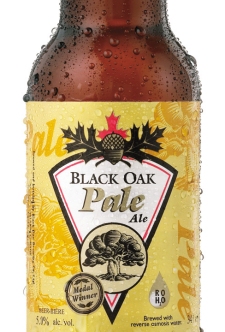 Given the nature of this weekly column, it’s probably obvious that I’m not the type of beer drinker who sticks with a single favourite brand. I usually have a bottle each of a dozen or so different beers in the fridge at any given time, and another box or two of others stashed in the closet. Even when I go out, I rarely have the same beer twice in a night, unless I’m at a pub where there’s only one beer that I like on tap.
Given the nature of this weekly column, it’s probably obvious that I’m not the type of beer drinker who sticks with a single favourite brand. I usually have a bottle each of a dozen or so different beers in the fridge at any given time, and another box or two of others stashed in the closet. Even when I go out, I rarely have the same beer twice in a night, unless I’m at a pub where there’s only one beer that I like on tap.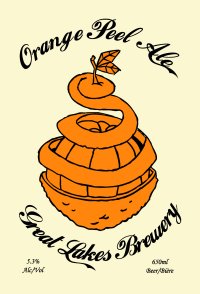 In a local craft beer scene that has seen its fair share of well-intentioned failures, Etobicoke’s
In a local craft beer scene that has seen its fair share of well-intentioned failures, Etobicoke’s  As mentioned in last week’s column, the LCBO’s Spring beer release has started trickling out into selected locations. It’s quite a lean release this time around, featuring only six beers, one of which (Fruli Strawberry Beer) is already available year-round at the Beer Store. Of the remaining five beers, only two are imports: the Duchy Originals Organic Ale that I
As mentioned in last week’s column, the LCBO’s Spring beer release has started trickling out into selected locations. It’s quite a lean release this time around, featuring only six beers, one of which (Fruli Strawberry Beer) is already available year-round at the Beer Store. Of the remaining five beers, only two are imports: the Duchy Originals Organic Ale that I 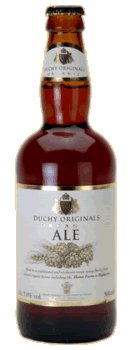 I had a bit of trepidation about this week’s column, as I’m coming off of a battle with a nasty stomach bug, and wasn’t sure if I was up for a beer yet. But my weekly mission cannot be denied, so I pulled my two latest purchases from the fridge:
I had a bit of trepidation about this week’s column, as I’m coming off of a battle with a nasty stomach bug, and wasn’t sure if I was up for a beer yet. But my weekly mission cannot be denied, so I pulled my two latest purchases from the fridge: 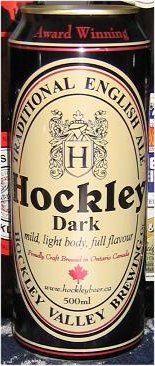 While they won’t be officially given out until tomorrow, this year’s edition of the Ontario Beer Awards have already caused some controversy in the local beer geek scene thanks to a leaked list of winners being
While they won’t be officially given out until tomorrow, this year’s edition of the Ontario Beer Awards have already caused some controversy in the local beer geek scene thanks to a leaked list of winners being 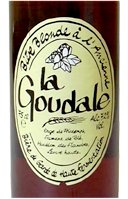 It would be a bit of an understatement to say that France is not known for having a great beer culture. After all, it’s one of the countries most synonymous with wine, and most people would be hard pressed to name a single French beer. (No,
It would be a bit of an understatement to say that France is not known for having a great beer culture. After all, it’s one of the countries most synonymous with wine, and most people would be hard pressed to name a single French beer. (No, 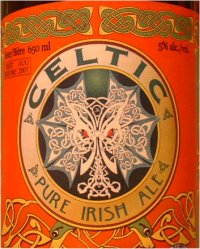 If you believed all the advertising and hype that gets rammed down our throats around this time every year, then you’d think Guinness was the only suitable choice of beer for St. Patrick’s Day. And the sad fact is that if you have your heart set on sticking with an actual Irish beer for the 17th, then Guinness is the best of a mediocre and mass-produced lot that also includes Kilkenny, Smithwicks and Harp – unless, of course, you were smart enough to hoard a few bottles of
If you believed all the advertising and hype that gets rammed down our throats around this time every year, then you’d think Guinness was the only suitable choice of beer for St. Patrick’s Day. And the sad fact is that if you have your heart set on sticking with an actual Irish beer for the 17th, then Guinness is the best of a mediocre and mass-produced lot that also includes Kilkenny, Smithwicks and Harp – unless, of course, you were smart enough to hoard a few bottles of 